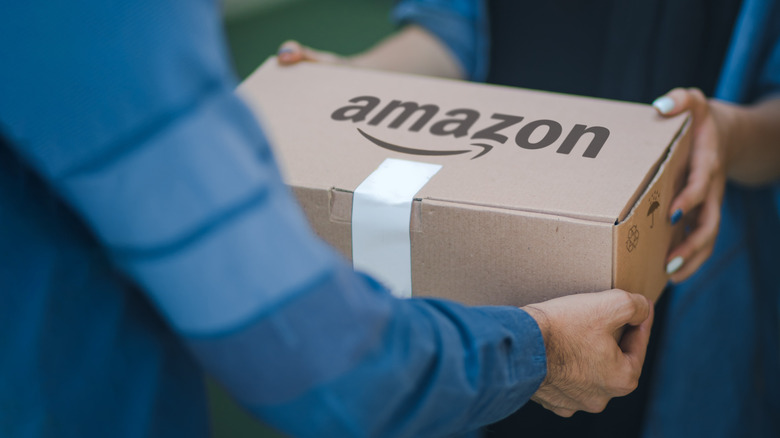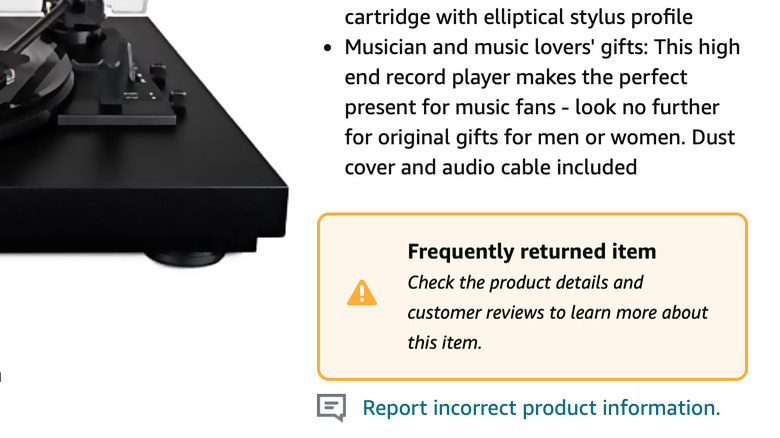Amazon Just Got A Super Useful Feature That Will Warn You If An Item Is Frequently Returned
Amazon's 30-day hassle-free return policy makes shoppers unafraid to ship goods back when they don't meet their expectations. As long as the product isn't listed as unreturnable for some reason, as you'll often find for perishable goods like foods, you can generally expect to be able to return it for virtually any reason you deem necessary, no questions asked.
The online storefront giant has also made the logistics of returning said items easier than ever. You can print labels and schedule pickups from the comfort of your home, and you can even drop them off at several brick-and-mortar partners such as Kohl's, Whole Foods, and The UPS Store without paying for postage. It's easier and quicker than ever to return products at Amazon, and apparently, some receive such a high volume of returns that the company now feels compelled to display a warning whenever you stumble upon them.
The flag appears immediately beneath the main product description in a yellow box that stands out like a sore thumb labeled "frequently returned item" in bold. According to a statement given to The Information, Amazon spokesperson Betsy Harden suggests this is for the people. "We're currently showing return rate information on some product detail pages to help our customers make more informed purchase decisions," Harden said.
How this changes online shopping
Having their product flagged for high returns is the last thing any online storeowner wants, so this small gesture has a significant effect. It actively keeps brands on their toes at every level, from assembly to packaging, advertising, and delivery. Obviously, consumers stand to benefit most from the heightened visibility of red flags, but it also helps the retailer. Fewer returns mean cutbacks on the money and waste needed to process the shipments, which helps the environment and protects the bottom lines of everyone involved.
The move aims to help consumers shop with better confidence by exposing products that may have quality issues or ultimately don't live up to the description and images. While everyone should take more than just a couple of minutes to jog through reviews before purchasing a product, they too can be misleading. Some companies have been caught incentivizing positive reviews with free products, gift cards, or by direct payment.
Plus, a product's long-term quality history may not always reflect the current state of affairs. Manufacturers often change suppliers and processes without warning, and history shows even some products that have previously garnered a reputation for quality could eventually shed their goodwill with a bad production stream. Again, reviews will usually let you know if this is the case, but not always, so it's nice to have another mind-easing layer of information before heading through checkout.

